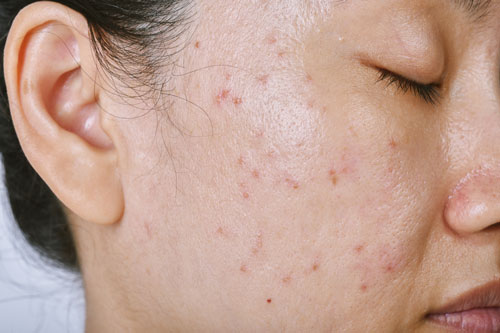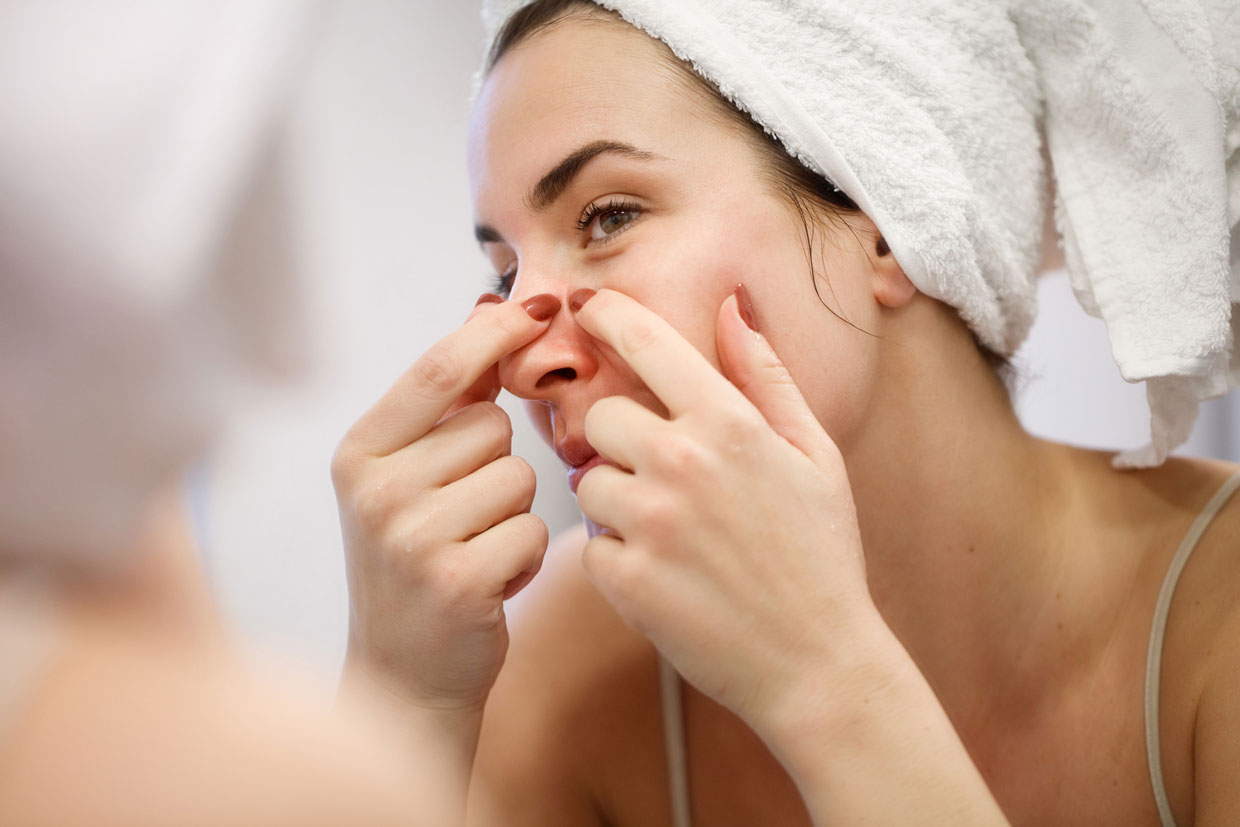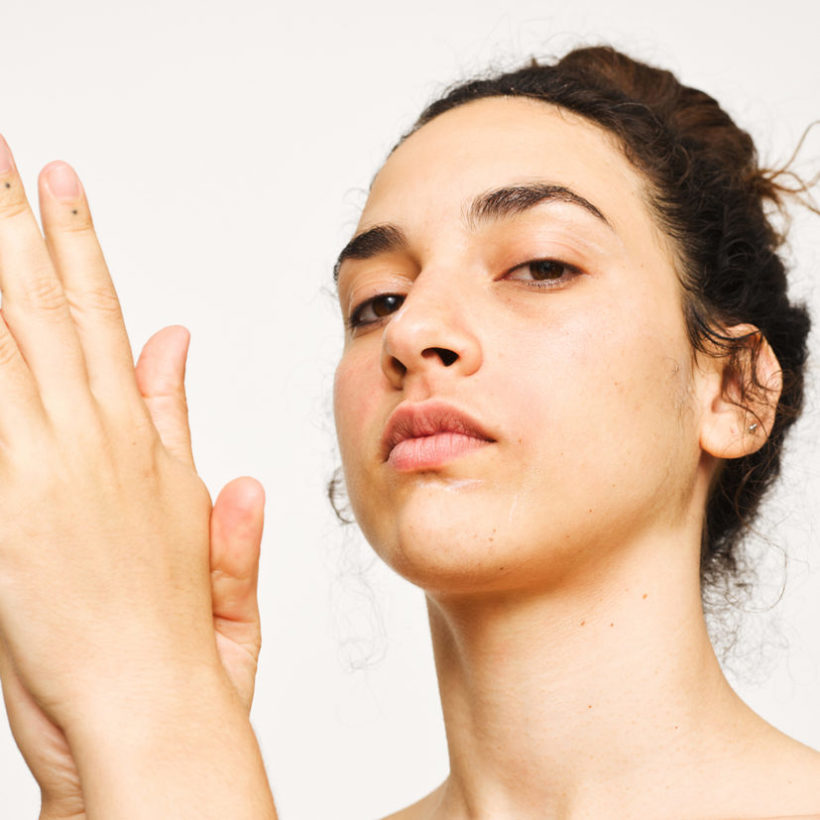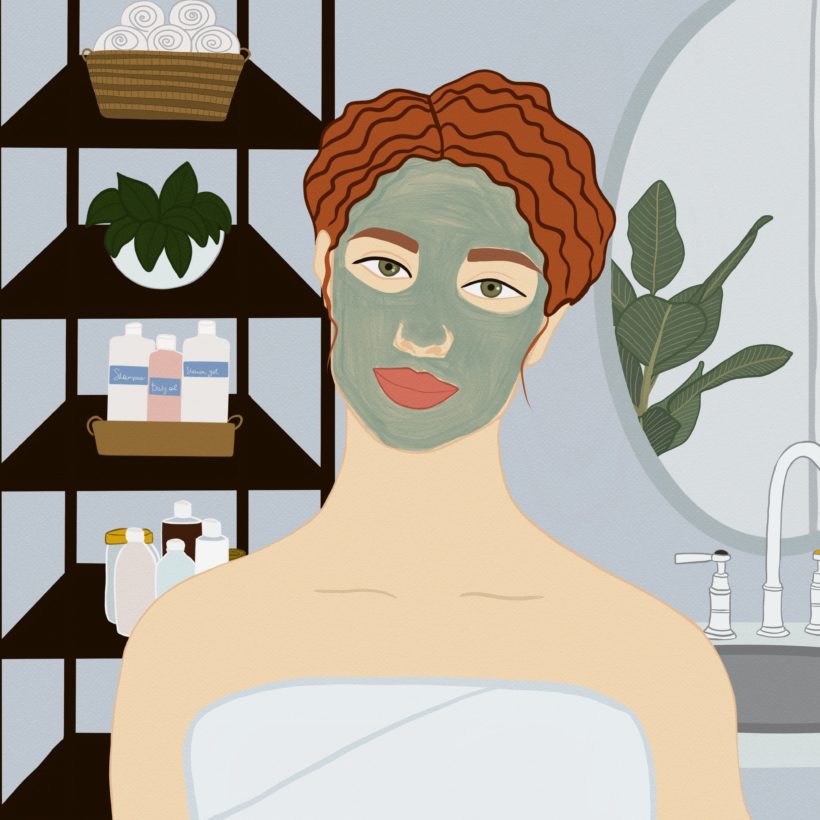Here we are scabby and red,” celebrity Tallulah Willis said in an Instagram selfie — one of several where she opens up about her skin-picking disorder. Our parents all doled out the same advice: “Keep your hands off your face.” Fingertips can be a breeding ground for bacteria, dirt, and oil. And when you add skin-picking to the mix, this can create scabby, inflamed skin that can lead to scarring.
Skin-picking is more than just a temporary bad complexion day. Below, our experts get candid about the psychological component of skin-picking disorder and how to treat it.
What Is Skin-Picking Disorder?
Skin-picking is a common disorder also known as excoriation disorder or dermatillomania. Patients with this condition have a repeated urge or impulse to pick at their skin, resulting in psychological or physical damage. Dr. Jessica Weiser, a board-certified dermatologist, says it is on the obsessive-compulsive disorder (OCD) spectrum. “While not always the case, it can also be associated with other mental health conditions, including generalized anxiety disorder, depression, and panic disorder,” adds Dr. Marisa Garshick, a board-certified dermatologist.

Though skin-pickers often zone in on blemishes and zits, skin-picking can happen anywhere on the body: dry skin, scabs, ingrowns, hair and hair follicles, bumps, cysts, dry patches, eyelashes, eyebrows, and even nails. “Some people pick at their skin even if there are no obvious changes to the skin,” Dr. Garshick says. While the face is the prime suspect, no skin area is off-limits. Patients can also pick the hairline, arms, legs, and bikini lines.
Why Does Skin-Picking Happen?
There’s no single reason why some of us pick to the point of no return, and others have total self-control. Perhaps it’s a coping mechanism or something some people are programmed to do, but skin-picking causes significant emotional distress. Dr. Weiser says patients often have compromised self-confidence and may become introverted to avoid showing their skin in social and professional situations.
“While many people find satisfaction in picking at their skin, it can be considered a disorder when someone cannot stop. It interferes with daily living and causes functional or emotional distress. And while there may be a genetic component to it, some people find that regular picking may be more likely to occur,” says Dr. Garshick. Skin-picking may be satisfying as it offers some temporary “relief” to pick at the skin. “It is often the case that people know they should not pick but find that they cannot help it. Additionally, the resulting appearance of areas where the skin has been picked can lead to feelings of embarrassment or shame, can be distressing, and interfere with relationships and work,” says Dr. Grashick.

The act of picking is common and most often triggered by stress, boredom, or flat-out compulsion tendencies. In Tallulah Willis’ case above, stress was the culprit. “[I was] feeling out of control, so zeroing in on something I can control, thus fingernails met face,” she says in her caption. But skin-picking can also be triggered by something as simple as a small bump that someone cannot leave alone, Dr. Weiser says. “Patients who pick have a sense that they are making something better or removing something from the skin when, in fact, the picking is creating slow-healing open wounds,” she adds. Some people feel that picking will help remove a blemish or scab and leave the smooth skin, says Larissa Lemke, an aesthetician at Face Haus Dallas West Village.
As mentioned, skin-picking can also have a psychological component associated with compulsive disorders or anxiety in some cases. While several different triggers lead to picking, what sets one person off may be completely different from someone else.
What are the Effects of Skin-Picking?
Some patients pick at their skin for a few minutes, whereas others go longer. Either way, they can emerge with red, bloody, inflamed, and angry complexions.
The short-term effects of incessant picking can include open wounds, redness, inflammation, lesions, blemish

“When we pick at the skin, it can trigger inflammation, which can appear as pimples or breakouts and make the skin prone to scarring. Anytime you touch your face, you can transfer bacteria and other germs from your hands to your face, contributing to clogged pores and breakouts,” says Dr. Garshick. Lemke adds that picking can make existing pimples or blemishes appear red, swollen, and inflamed. “The hands are covered in all different types of bacteria that will lead to further irritation and can cause a pimple or blemish to get worse or even infected.”
Skin-picking can lead to open wounds that make skin vulnerable to infection, says Dr. Weiser. “This skin bacteria can penetrate hair follicles and oil glands to infect congested pores, leading to subsequent inflammatory pimples.”
The repeated act of picking at the skin also physically breaks down the very important skin barrier and often disrupts the skin’s microbiome, too. “A compromised skin barrier makes skin more prone to irritation and rashes, more sensitive, and at higher risk of infection,” says Dr. Weiser.
How to Prevent Skin-Picking
Skin picking disorder falls under Body-Focused Repetitive Behavior (BFRB), when people repeatedly pick at skin, nails, scabs, or pulling hair. “It’s a repetitive or obsessive behavior that many people deal with, including myself,” says Lemke. “That is why it’s so hard to stop on your own — it seems to become an addiction.”
Often, skin picking and the emotional and mental components require proper treatment. Dr. Weiser says she refers patients to see cognitive-behavioral therapists to treat skin picking and compulsions. “Once the behavior is improved or corrected, I use a variety of lasers to correct redness, pigmentation, and textural scarring. Often a series of laser treatments can significantly improve the skin, which is also very helpful for restoring patients’ confidence and further improving their interpersonal interactions.”
How to Treat Skin-Picking
In addition to seeing proper medical help to prevent further picking, you can work with your dermatologist to find ways to heal.
“One way to help improve the skin barrier and heal the wounds is to apply a thick healing ointment, which facilitates the healing process,” says Dr. Garshick. “The act of putting something on the skin may also help to satisfy the desire to touch the skin as the ointment will leave the skin softer and smoother, and as a result, harder to pick at.” And just because there may be damage to the skin barrier doesn’t mean it’s forever and you can’t fix it. “You can replenish the skin with proper care through professional facials and an at-home skincare regimen that focuses on healing ingredients,” Lemke adds.








